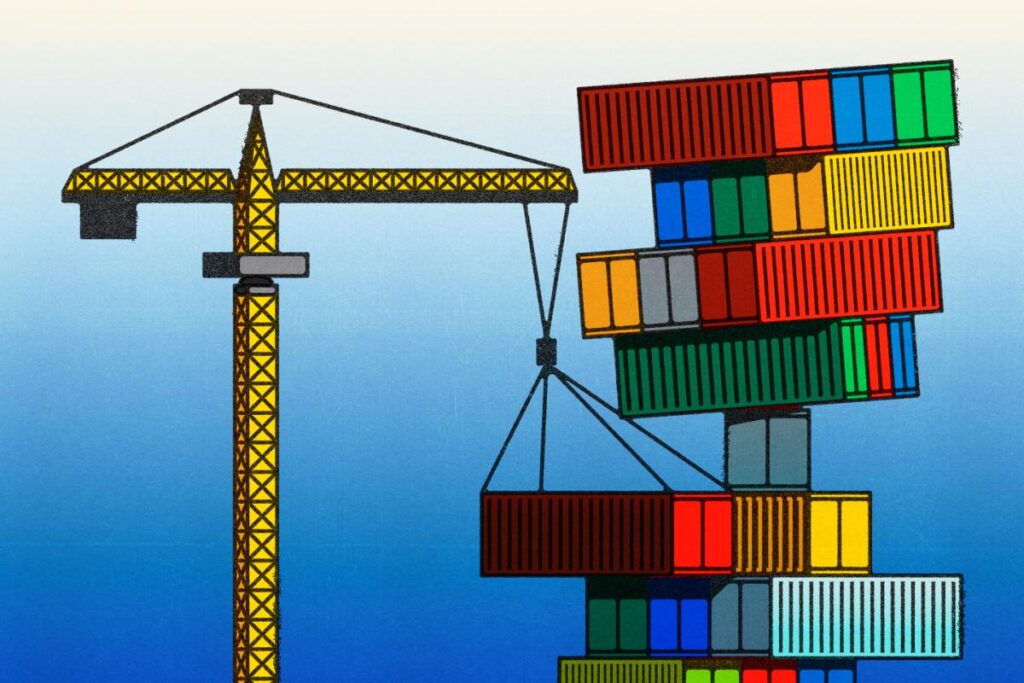
The world is experiencing a significant economic transformation, marking the third major reordering in the past century. The United States, historically at the forefront of these shifts, is now adopting more unilateral strategies that are reshaping international trade dynamics. This latest reordering, influenced by policies from the Trump administration, has raised concerns about the implications for global partnerships and the overall stability of the economic landscape.
Historically, the first major economic reorganization occurred at the Bretton Woods Conference in July 1944. Following World War II, the United States leveraged its economic strength to establish a system centered around the dollar, which was pegged to gold. This framework aimed to foster global trade and economic stability while positioning the U.S. as the central player in international finance. The architect of this system, Treasury official Harry Dexter White, believed that fixed currency parities would promote peace and prosperity.
The second significant shift came in April 1971 when President Richard Nixon dismantled the gold standard, effectively ending the Bretton Woods system. This move, made during a retreat at Camp David, was executed with little regard for international reactions. Nixon’s Treasury Secretary, John Connally, famously dismissed concerns from allies, stating, “We’ll go broke getting their good will.” Despite initial unilateralism, Nixon’s administration eventually shifted toward a more collaborative approach, leading to the formation of the G-7.
In contrast, the current economic reordering under President Donald Trump appears more explicitly unilateral. His administration implemented tariffs dubbed “Liberation Day,” targeting both allies and adversaries. This approach stems from a belief that the U.S. has shouldered disproportionate burdens in the global financial system. Critics argue that these policies undermine the remaining structures of postwar trading rules and provoke responses from countries looking to reduce their reliance on U.S. markets.
Trump’s tactics have intensified a long-standing debate about the effectiveness of the global trading system. The World Trade Organization (WTO) has been criticized for allowing countries to impose unfair trade practices, such as subsidies and protectionist measures. These trends have contributed to a growing dissatisfaction among various political factions in the U.S., leading to increased support for anti-trade policies.
Historically, concerns about trade deficits have prompted U.S. leaders to take action. Even President Ronald Reagan, known for his free-trade stance, imposed tariffs on Japanese products to protect American industries. Since then, every administration has made attempts to address perceived flaws in the international trading system, from George W. Bush’s steel tariffs to Joe Biden’s continuation of many of Trump’s tariffs on China.
While Trump’s administration has drawn attention to the shortcomings of global trade, critics argue that his approach lacks the necessary international cooperation. Countries in Europe, Latin America, and Southeast Asia are already exploring new trade agreements to mitigate their dependence on the U.S. The initial wave of tariffs introduced in April sent shockwaves through global bond markets, highlighting the precarious state of the world economy.
The core of Trump’s economic argument centers on the trade deficit, which he has long criticized. He has claimed that other nations, particularly China, engage in industrial policies that create unfair surpluses, forcing the U.S. to absorb trade deficits. This perspective overlooks the complexities of the global economic system and the fiscal policies contributing to America’s economic challenges.
Trade deficits are symptoms of deeper issues within the global trading framework, particularly the unfair practices that hinder American competitiveness. Countries like China have been known to offer significant industrial subsidies and disregard labor and environmental standards, leading to an imbalance in manufacturing capabilities. This situation prevents the U.S. from capitalizing on its comparative advantages in high-tech manufacturing sectors.
In recent years, the role of corporate tax havens has further complicated the landscape, allowing companies to relocate manufacturing and intellectual property to jurisdictions with lower tax rates. As a result, the U.S. loses out on revenue and job creation opportunities. For instance, Ireland has emerged as a significant exporter of digital services, largely benefiting from American intellectual property.
To counteract these challenges, experts advocate for a cooperative approach. Many suggest that the U.S. should work alongside allies to address China’s economic distortions through coordinated trade policies. The European Union and G-7 share concerns about China’s industrial practices, which jeopardize fair competition and environmental standards.
The U.S. dollar plays a crucial role in the global economy, accounting for nearly 90 percent of foreign exchange transactions. This dominance provides the U.S. with significant financial leverage, allowing for lower borrowing costs and increased purchasing power. However, the current economic climate, characterized by tariffs and rising deficits, threatens to weaken the dollar’s status and, consequently, the U.S. economy.
While the push for increased manufacturing in the U.S. is essential, it is important to recognize the value of the service sector. The U.S. maintains a trade surplus in services, totaling nearly $300 billion in 2024. Strengthening both manufacturing and services can create a more balanced economic landscape and provide job opportunities across various sectors.
The current institutions governing global trade, particularly the WTO, have struggled to adapt to modern challenges. Critics argue that the WTO has failed to hold countries accountable for unfair practices, prompting calls for a more flexible system that can evolve with the global economy. A new framework focusing on fair trade could help restore American competitiveness and address the flaws in existing trade agreements.
Proposals for a fair-trade customs union emphasize high labor and environmental standards, ensuring that only countries adhering to these principles can participate fully. This approach aims to establish a large common market among like-minded nations, fostering fair competition and discouraging anticompetitive practices.
The success of this initiative depends on the United States’ ability to maintain its economic influence and build strong partnerships with other countries. By promoting cooperation and establishing a new set of trade rules, the U.S. could navigate the complexities of the global economy and position itself as a leader in shaping future trade relationships.
The global economy stands at a critical juncture. The current tariff measures may wane, but the need for a comprehensive reform of the international trading system persists. It is essential for U.S. leaders to seize this moment and advocate for a system that reflects the principles of fair trade, ensuring a sustainable and competitive economic landscape for the future.






